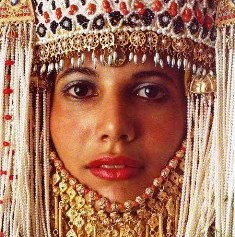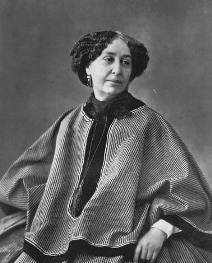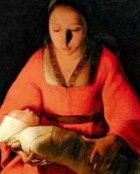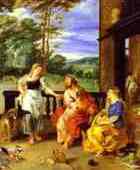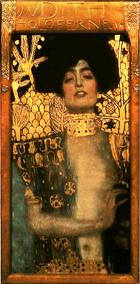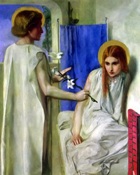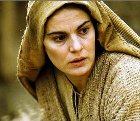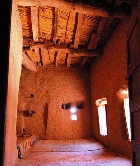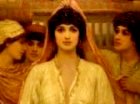Focus questions
Look for the human experience in the story. What is it? How does it apply to your life?
- What are the most interesting moments in the story? Why do these particular moments appeal to me?
- In the story, who speaks and who listens? Who acts? Who gets what they want? If you were in the story, which person would you want to be friends with? Which person would you want to avoid?
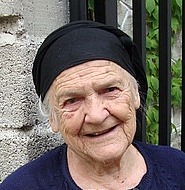 What is God’s interaction with the main characters? What does this tell you about the narrator’s image of God? Do you agree with this image?
What is God’s interaction with the main characters? What does this tell you about the narrator’s image of God? Do you agree with this image?- What is happening on either side of the story, in the chapters before and after it? Does this help you understand why this particular story was included?
- The narrator/editor has chosen to tell some things and leave other things out. What has been left out of the story that you would like to know?
- Are there still people like this in the world today? How is the story relevant to modern life, especially your own?
Eve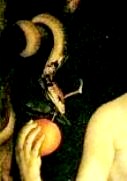
(The story, with Bible text and notes, is at Eve’s Story)
Doodling
Here’s a neat little trick. Print the words GOOD and EVIL. Cross out one of the O’s in GOOD. Put a D in front of EVIL. What do you have?
Discovering the characters
 The four characters in the Genesis story are God, Woman, Man, and Evil
The four characters in the Genesis story are God, Woman, Man, and Evil
Working from the text, draw up a list of the characteristics of each of the four. Give at least three words for each. Be careful that the words you think of are related to the story as you read it in the Genesis text, and not to ideas you have inherited from other people.
Compare your list with the list of a learning partner.
Are there differences?
Discuss with your learning partner the qualities of each character. (Woody Allen commented that the problem with the Bible is that it suffers from a totally unbelievable main character!)
Comparing the stories
Read the two stories about the creation of woman in Genesis 1:26-31 and Genesis 2:21-15.
What do they tell you about the creation of woman?
- How are the stories different from each other?
- What different impressions do the stories make on you?
 Discussion
Discussion
Join a group of friends or fellow-students to discuss the following questions:
- Topic 1: How might the creative potential we have, being made ‘in God’s image’, be used to restore the Garden?
- Topic 2: How does the story of Eve illustrate the connection between actions and consequences?
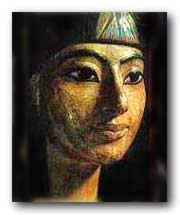 Hagar and Abraham
Hagar and Abraham
(The story, with Bible text and notes, is at Hagar’s story)
Slaves and the Law
Make a search for ancient laws governing the treatment of slaves, for example in
- Deuteronomy 23:15-20, on fugitive slaves or
- The Code of Hammurabi
Drawing a mind picture
Try to imagine that you are Hagar, living with the tribal group of Sarah and Abraham.
- What are the smells? The colors? The sounds? The perfumes?
- What is the landscape around you? What time of day is it?
- What is the mood of the people whose eyes meet yours?
- Are the people old or young? Dark or fair? Good-looking or ugly? Tired or energetic?
- What are the people wearing?
- What are you wearing (clothing, footwear, jewelry)?
Click here for information on dwellings, clothing, and personal decoration.
Click here for information on Slavery
Slavery then and now: a debate
Modern images of slaves (as in the movie Ben Hur) emphasize the worst-case scenarios, ignoring the millions of slaves who in many ways resembled modern workers, tied to their workplace much as ancient slaves were. See Slavery in the Bible.
Topic: That wage slavery in the modern world is the same as slavery in past ages.
- Divide the group into two sides.
- Decide which side will support the proposal and which will oppose it.
- In small groups on each side, draw up a list of at least three points to support your argument.
- Share the points between groups, and decide which points should be argued most strongly.
- Nominate debating team members and a chairperson.
- Choose the team members for your side.
- Team members meet and prepare their arguments.
- Conduct the debate; guests may be invited.
- Hold a debriefing/discussion for the whole group.
Art Gallery
Click on the Art Gallery link for HAGAR. Read the story at the bottom of the page, or if you already know it well go straight to the Painting section.
Scroll quickly through the pictures to gain an initial impression (click on the images to enlarge them).
Which ones jump out at you?
Go back and look at them more carefully. Why did they gain your attention? Analyze what features made them attractive to you. Was it a personal thing, or would these features make them attractive to any audience?
Now go over each of the pictures more carefully. What is the main message of each one? Is there any particular picture whose message is especially attractive to you? What does it say to you? Why is this important to you?
Rebecca
(The story, with Bible text and notes, is at Rebecca’s story)
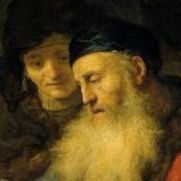 Debate: ‘that the end justifies the means’
Debate: ‘that the end justifies the means’
- Divide the group into two sides
- Decide which side will support the proposal and which will oppose it
- Each group draws up a list of at least three points to support their argument
- Decide which points should be argued most strongly
- Nominate debating team members and a chairperson
- Choose the speakers for each side
- Team members meet and prepare their arguments
- Conduct the debate; guests may be invited
- Hold a debriefing/discussion
Building a Personal Genealogy
The foundation stories in the Book of Genesis grew out of people’s recollections of people and events long ago. Find out as much as you can about your own ancestors. What sort of people were they? What were they like?
Talk to older members of your family, and build up a portfolio of stories about events in the lives of various family members.
- How did they meet their spouse?
- What was their early life like?
- What were their parents like?
- What special events did they experience?
Gather stories about your own family, and record them in a folder that can be kept for future reference.
Art Gallery
‘these are real people, with idiosyncratic gestures and movements…
See, for example, Rebecca’s ambivalent body language, as she watches her blind husband give his Blessing to the wrong son.’ Click on Rebecca: Art Gallery
- Read the story, or if you already know it scroll down to the Paintings section.
- Look quickly through the pictures to gain an initial impression (click on the images to enlarge them). Which ones jump out at you?
- Go back and look at them more carefully. Why did they gain your attention? Analyze what features made them attractive to you. Was it a personal thing, or would these features make them attractive to any audience?
- Now go over each of the pictures more carefully. What is the main message of each one? Is there any particular picture whose message is especially attractive to you? What does it say to you? Why is this important to you?
Tamar
(The story, with Bible text and notes, is at Tamar’s story)
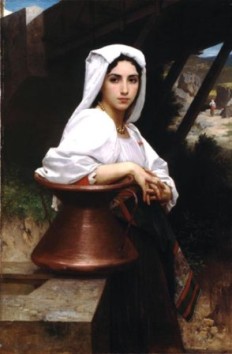 Seeking Justice
Seeking Justice
Have you ever been in a situation where you were unjustly treated? Describe this event, first by writing a personal journal-entry, then by talking to a study partner.
In the journal entry, describe the event and your personal reaction to it. What happened, and how did you feel about it?
Describe the event to your learning partner, then discuss ways you might have dealt with the unjust treatment you received.
Researching ancient laws
The biblical law ‘an eye for an eye, a tooth for a tooth’ was in fact an attempt to limit revenge killings, and stop the blood feuds that were prevalent in the ancient world.
Use a search engine to learn about laws in the ancient world, particularly the laws of Hammurabi. How do these ancient laws contrast with laws in the modern world?
Art Gallery
Tamar has covered her face so that her identity is hidden, but her clothes are disheveled, hinting at her task as a prostitute. The suggestive angle of Judah’s staff leaves no doubt as to what they are doing.’
Tamar – Art Gallery
Read the story, or if you already know it well scroll down to the Painting section.
Scroll quickly through the pictures to gain an initial impression (click on the images to enlarge them). Which ones jump out at you?
Go back and look at them more carefully. Why did they gain your attention? Analyze what features made them attractive to you. Was it a personal thing, or would these features make them attractive to any audience?
Now go over each of the pictures more carefully. What is the main message of each one? Is there any particular picture whose message is especially attractive to you? What does it say to you? Why is this important to you?
Potiphar’s wife
(The story, with Bible text and notes, is at Potiphar’s wife’s story)
Make a search for ancient laws governing the treatment of slaves, for example in Deuteronomy 23:15-20, on fugitive slaves or in the Code of Hammurabi
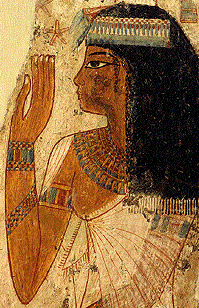 Empathizing with the character in the story
Empathizing with the character in the story
Try to imagine that you are Potiphar’s wife, living in a wealthy Egyptian household.
- What type of house did you have?
- What were you be wearing (clothing, footwear, jewelry)?
See Clothes, Jewels, Cosmetics - What were the attitudes to love and sex in Egypt then?
- What was the routine of your daily life?
- Why were you attracted to Joseph?
Debate: That wage slavery in the modern world is the same as slavery in the past.
- Divide into two sides
- Decide which side will support the proposal and which will oppose it
- Each group draws up a list of at least three points to support your argument
- Share the points between groups, deciding which points should be argued most strongly
- Nominate debating team members and a chairperson
- Choose the team members for your side
- Team members meet and prepare their arguments
- Conduct the debate; guests may be invited
- Hold a debriefing where team members can discuss the experience.
Miriam
(The story, with Bible text and notes, is at Miriam’s story)
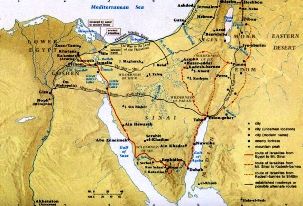 Interview
Interview
Miriam led her people in their search for a new land. She epitomizes the quest of every migrant for a better life in a country far from the home they have always known. Interview someone who has recently migrated to your own country.
- Why did they come? What did they hope to find?
- What have been their experiences?
- What difficulties did they encounter?
- What were some experiences of welcome they received?
- What do they hope to achieve in their new life?
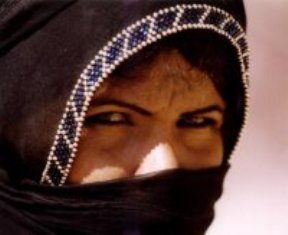 Leadership
Leadership
What are the qualities of a good leader? Choose one of the following focus questions, and use group discussion as the basis for a response to it:
What type of leadership is promoted by the media? Develop a point summary of models of leadership found in newspapers, television and books.
Have you witnessed someone acting as a leader in a difficult situation? Describe what happened, and why you admire this person.
What are the roles and duties of leaders in schools and churches?
What forms of leadership and ministry are there in your church?
What models of leadership are found in the Scriptures? Cite some specific examples that you admire, and explain why you have chosen these.
Deborah and Jael
(The story, with Bible text and notes, is at Deborah and Jael’s story)
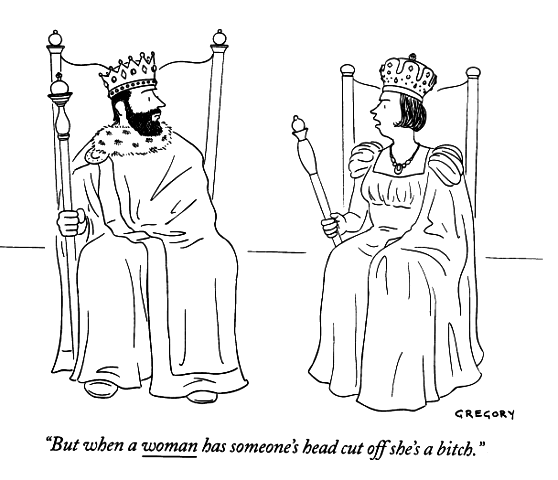
Comparing the stories
The story of Jael is told in prose (Judges 4) and poetry (Judges 5). Find passages from both accounts that describe the same incident.
- What are the main differences that you see?
- Which of the two forms is the more effective?
Warfare in ancient times
‘Shields were also varied, reflecting the question of whether it was better to have mobility (a light-weight shield) or security (a heavier shield). This was a crucial question in hand-to-hand fighting.’
Troops, Armor, Weapons – Ancient Warfare
Research methods of warfare in the period of the Judges. Find information on
- the types of weapons used at the time
- different methods of transport
- the size and organization of armies
- the topographic layout of the site of Deborah and Barak’s battle.
Where possible, present your information visually, using maps, drawings, models, etc.
Drawing a cartoon
Collect examples of modern satirical cartoons. How do they make fun of the person/situation they are depicting?
Using modern cartoons as your example, draw a cartoon that expresses the ridicule of the Israelites, and the glee they expressed in the Song of Deborah after the Canaanites lost the battle.
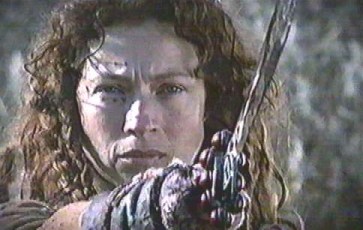 Discussion
Discussion
The stories of Jael and the young King David are similar in several ways. Yet there is a great difference between the fame of David and Jael. Everyone knows the story of David and Goliath, but few people have heard of Jael.
- Discuss in groups why this might be so.
- Share your group’s opinions with other groups.
- List the reasons in order of priority.
Jephtah’s daughter
(The story, with Bible text and notes, is at Jephtah’s daughter)
Empathic reconstruction
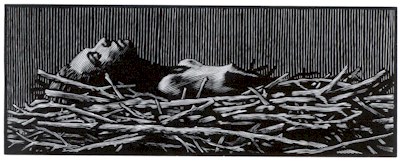 ‘Be’ a person in the story of Jephtah’s daughter, perhaps the girl herself, or one of her friends, her father, her mother who is never mentioned in the story, or a servant in the household of Jephtah.
‘Be’ a person in the story of Jephtah’s daughter, perhaps the girl herself, or one of her friends, her father, her mother who is never mentioned in the story, or a servant in the household of Jephtah.
Explain what has happened, as you saw it. Empathize with the motives and emotions of the person you wish to project.
You should
- make a thorough reading of the story
- choose the character you would like to be
- mark the sections of the story which relate to your character
- make a list of those things you know for certain about them
- make a list of the things you would like to know about the character
- research background details
- record your finding, either in written or spoken form.
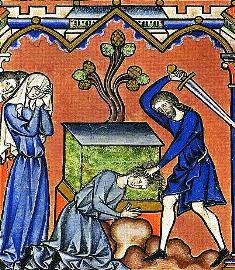 Media file
Media file
Develop a print media file on a theme related to the story of Jephtah’s daughter , for example
- People who mourn a loss
- Children who suffer abuse, and those who help them
- People who show courage and dignity in difficult situations
In the presentation of your file, you should
- decide on a topic
- collect different types of material from magazines, advertisements, articles, cartoons, etc
- sort through the collected material and make choices
- decide on your presentation mode
- make rough copies of comments to accompany the material you have gathered
- organize materials for presentation, and arrange your lay-out
- show the file as it stands to a study partner, asking for helpful comments and suggestions
- produce the final layout of the file.
Delilah
(The story, with Bible text and notes, is at Delilah’s story)
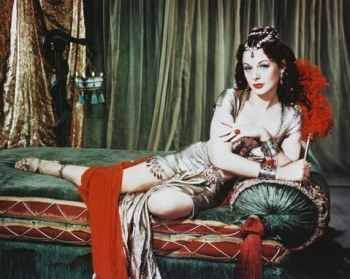 Retelling the Story
Retelling the Story
Delilah has traditionally been portrayed as a temptress who betrayed a hero. Write the story from Delilah’s point of view, covering points such as:
- What Delilah knew about Samson before she met him (read previous sections of the story to find out about Samson’s earlier relationships with women)
- Their first meeting, and what she thought of him
- Samson’s love for Delilah
- Delilah’s reaction when she was approached by the Philistine lords
- The reasons why she agreed to help them
- Her attempts to find out about Samson’s strength
- The scene when Samson finally told her the truth
- Her emotions when the Philistines tortured Samson
- What happened to Delilah after Samson was taken away.
Research
Using your library or the internet, find out about the lay-out and construction of a Philistine temple.
You might start your research by looking at the website opposite.
Then use a search engine to find an example of a temple similar to the one described in Judges 16, excavated at Tell Q’asile, near Tel Aviv. It had large wooden pillars supporting a balcony on which many people could stand.
Bathsheba
(The story, with Bible text and notes, is at Bathsheba’s story)
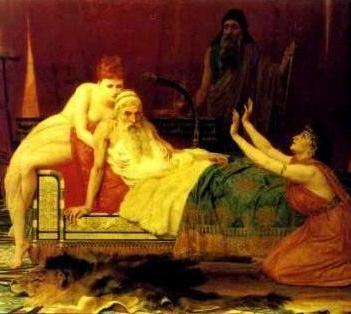 What is Truth?
What is Truth?
The story of Bathsheba as we have it was probably written for court records during the reign of Solomon – when Bathsheba was still alive. It is therefore biased in her favor, and omits any details or events that might have cast her in a bad light, only including them if they were common knowledge and could not be disputed.
Re-write Bathsheba’s story from a different, less sympathetic perspective, for example from the viewpoint of Uriah’s sister, or Adonijah’s mother.
Reconstruct Solomon’sTemple
Details of the Palace of Solomon where Bathsheba lived can be found in 1 Kings 7. As well as the throne room, it contained the royal apartments. Here the harem lived in rooms surrounding an interior courtyard. It was a magnificent building, decorated with costly Lebanese cedar, gold, bronze and ivory.
The Temple of Solomon has completely vanished, but it is still possible to estimate the details of its construction. Check Solomon’s Jerusalem for reconstructions, and use libraries or the Internet to find information about the Temple. Look at
- the description given in 1 Kings 5, 6 and the end section of 7
- archaeological remains of temples built in surrounding cities
- modern reconstructions of the Temple.
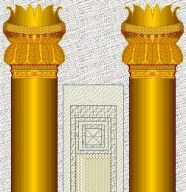 Using this information
Using this information
- write a full description of the Temple, or
- make a detailed drawing of it, or
- build a scale model of it.
Your presentation should include information on
- its dimensions and measurements
- the types of building materials used
- possible decoration
- different areas and what they were used for
- the constraints the architects/builders had to deal with, for example, site, building materials, and purpose of the building.
*** If you have trouble finding information for the activities, try the Google search boxes on this page.
Royal Women in Ancient Times
Research the lives of royal women in the empires and kingdoms of the ancient Middle East and Mediterranean area, including:
- their influence and position at court
- their daily lives
- their likely interests
- their religious beliefs, etc.
For a queen, ritual make-up was a badge of office. She painted her face in a particular way to denote her rank, and her separation from the common people.
How would the life of a royal wife in the Egyptian court have been different from Bathsheba’s life?
Design a poster that compares details of the court life of Bathsheba with similar royal wives in other courts throughout the ancient world.
Jezebel
(The story, with Bible text and notes, is at Jezebel’s story)
A mock trial of Jezebel
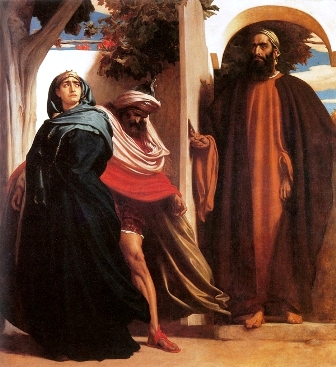 Conduct a mock trial of Jezebel. You will need a panel of judges, a prosecution and defence lawyer and their assistants, and gatherers of evidence.
Conduct a mock trial of Jezebel. You will need a panel of judges, a prosecution and defence lawyer and their assistants, and gatherers of evidence.
- Divide into two groups, one for the defense and one for the prosecution.
- Have each group decide on points for their argument, and imagine points that the other side may raise.
- Choose a member of the group who will speak as a lawyer for its side, and his/her assistants.
- Nominate a panel of judges, and decide on their role.
- Conduct the trial, with an opening address, arguments for both sides, and summary.
- Listen to feedback from the panel of judges.
Courage in today’s world
Discuss instances in your own life when you have needed great courage. Describe one incident, then answer the following questions:
- What helped you in this situation?
- Whom did you rely on?
- What were the results for your own self-confidence?
Debate
Topic: That more can be achieved by a benevolent dictatorship than by a democracy.
- Divide into two groups, one to take the affirmative side and one the negative side.
- Have each group decide on points for their own side, and consider points that the other side might raise.
- Choose the speakers for each group.
- Nominate the chairperson and explain that role.
- Make sure everyone understands the debating rules.
- Choose the judging panel.
- Debate the issue.
- Listen to feedback from the panel.
- Discuss reactions to the debate.
- In biblical times a drought meant widespread famine. Thousands of people died a slow death from malnutrition.
- King Ahab wished to buy the vineyard to turn it into a vegetable garden for the palace. This seems reasonable enough, but there was a hidden sub-text.
- This was not the first time Elijah had confronted Ahab, and the king knew it would not be the last. Elijah was a thorn in his side.
Ruth
Debate
Topic: ‘that arranged marriages have a better chance of success than marriages for love’ – see Ruth’s story
- Divide into two groups, one to argue for the statement, one to argue against.
- Brainstorm points for your argument, and points the other side may raise.
- Choose the speakers for each group.
- Nominate a chairperson to regulate the debate.
- Find out the rules for debating; make sure everyone knows these rules.
- Choose/invite a panel of judges.
- Hold the debate.
- Listen to feedback from the panel.
- Have a debriefing session where members of the team speak about the experience, with appropriate feedback and opinions.
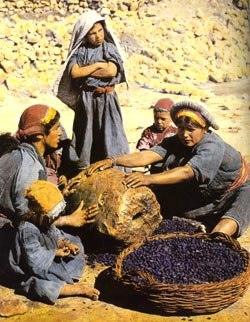 Acting the Part
Acting the Part
Be a person from one of the groups mentioned in the story of Ruth, for example
- A women of Bethlehem who greets Naomi and Ruth on their return. What is your reaction to the return of Naomi, whom you have not seen for years? How has she changed? What do you think of the new woman, a Moabite, whom Naomi has brought with her? Describe the scene, and what you think about it.
- One of the workers in the field. What is your opinion of your employer Boaz? What do you see going on between Boaz and the newly arrived foreign woman, Ruth? What do you think about it? Describe the scene, and your reaction.
- One of the elders at the city gates. You are aware of rumors about Boaz and Ruth, and you have known Boaz and Naomi for many years. What do you think about recent events concerning these three? What are your opinions about the people involved? Describe the scene, and your reaction.
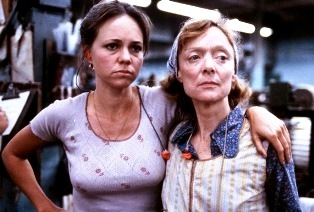 Women in films
Women in films
Identify recent films that highlight the creativity of relationships between women, either in a family situation, for example mother/daughter, sisters, grandmother/granddaughter, or between friends.
What methods has the film used to present the relationship? Has the relationship been favorable, unfavorable or both? Explain.
Esther
(The story, with Bible text and notes, is at Esther’s story)
Debate : ‘that benign despotism is an effective form of government’
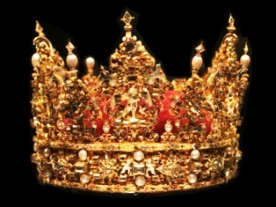 Divide the group into two sides
Divide the group into two sides- Decide which side will support the proposal and which will oppose it
- Draw up a list of at least three points to support your argument
- Decide which points should be argued most strongly
- Nominate a number of debating team members and a chairperson
- Choose the team members for your side.
- Team members meet and prepare their arguments.
- Conduct the debate; guests may be invited
- Hold a debriefing/discussion afterwards.
Discussion, analysis
What would be the qualities of an ideal queen? In other words, what should Ahasuerus have been looking for when he searched for a new queen/wife?
What qualities do you hope to find in a life partner? Discuss this question with a learning partner, and list the five most important qualities.
What qualities do you think your future life-partner would hope to find in you? How can you cultivate these qualities in yourself? List some practical strategies for being the person you want to be.
Judith
The story, with Bible text and notes, is at Judith’s story.
Images of God
There are two basic questions that hang over the whole of the Old Testament:
- what is the nature of God presented by the narrator of this particular story?
- do I agree with it?
Focus on the passage about the nature of God in Judith 9:11-17. What is Judith’s image of God? How does it differ from the elders’ image of a God you can bargain with? Have you encountered this image of a bargaining God in your own experience? In the modern world’s image of God?
Spend some time in quiet thought, drawing up your own image of God. Discuss with a learning partner.
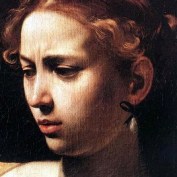
Rising to the Occasion
Think of some moments in your own life when you have risen to some extraordinary occasion, some emergency that called for you to behave in a way you would normally find difficult.
Write a brief description of one of these moments in your life.
What qualities did you find that you did not realize you had?
Art Gallery
Click on the Art Gallery link for JUDITH.
Caravaggio, for example, has painted a magnificent Holofernes, muscled, strong, powerful. His horrified face is the attention-grabbing focus of this picture. Judith, on the other hand, slices his neck with a look of mild distaste, as if she is carving the Sunday roast. Art Gallery: Judith
Read the story, or if you already know it well scroll down to the Painting section.
Scroll quickly through the pictures to gain an initial impression (click on the images to enlarge them). Which ones jump out at you?
Go back and look at them more carefully. Why did they gain your attention? Analyze what features made them attractive to you. Was it a personal thing, or would these features make them attractive to any audience?
Now go over each of the pictures more carefully. What is the main message of each one? Is there any particular picture whose message is especially attractive to you? What does it say to you? Why is this important to you?
Mary, mother of Jesus
(The story, with Bible text and notes, is at Mary’s story)
A Woman’s Life
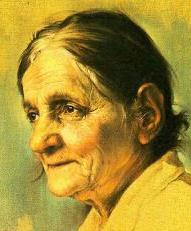 Interview your own mother, or an older female relative. You might compose your own list of questions for her, or ask some of the following:
Interview your own mother, or an older female relative. You might compose your own list of questions for her, or ask some of the following:
1. What are the three events in your life that you remember most vividly?
2. Can you describe one of these events?
3. What things have you done that you are most proud of?
4. What did you find most difficult in your life?
5. Did you learn about Mary of Nazareth when you were at school?
6. How was Mary portrayed?
7. What part did Mary play in religious rituals that you were involved in?
8. Which of Mary’s qualities have you tried to imitate in your own life?
You could, if you wish, answer some of these questions yourself, and recall what you learnt about Mary in your early schooling. How does the material in this chapter compare with your previous ideas about Mary?
Poster of Mary’s Life
Design symbols for each of the main events in Mary’s life. Make sure the symbols relate to her story, and not just to Jesus’ life.
Express these symbols in a visual form, either by drawing or painting them, producing a collage or poster.
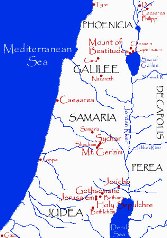 Mary’s homeland
Mary’s homeland
Draw up a map showing the relative positions of Jerusalem and Nazareth, marking in the boundaries of the provinces Samaria, Galilee and Judea
(see MAPS).
How far is it from Nazareth to Jerusalem? What sort of terrain would you go through, traveling from one to the other?
Identify a possible route that Mary might have taken in her journey from Nazareth in Galilee to ‘a Judean town in the hill country’ where Elizabeth lived. Research the world of Mary, and then describe
- the type of country she would have seen as she traveled
- the clothing and appearance of the people she would have traveled with.
Discovering each gospel’s perspective of Mary
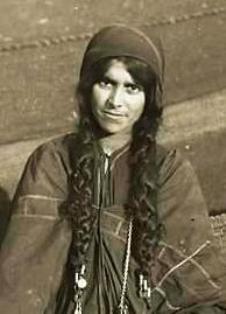 Mary of Nazareth in Mark’s gospel
Mary of Nazareth in Mark’s gospel
- What image of Mary do you receive from these episodes?
- If this was the only information you had about Mary of Nazareth, what would be your impression of her?
- Why do you think Mary is hardly mentioned in Mark’s gospel?
- What purpose might Mark have had when he wrote about Mary?
Mary of Nazareth in Luke’s gospel
- What image of Mary do you receive from the episodes in Luke’s gospel?
- If this was the only information you had about Mary of Nazareth, what would be your impression of her?
- What purpose might Luke have had when he wrote these stories about Mary? What do you think he was trying to say about her and about Jesus?
- How is Luke’s image of Mary different from Mark’s?
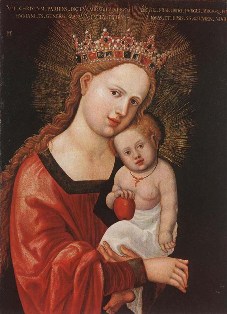 Mary of Nazareth in Matthew’s gospel
Mary of Nazareth in Matthew’s gospel
- What image of Mary do you receive from the episodes in Matthew’s gospel?
- If this was the only information you had about Mary of Nazareth, what would your impression of her be?
- What might have been Matthew’s purpose when he wrote these stories about Mary? What do you think he was trying to say?
- Compare Matthew’s version of these events with the way they are described in the gospels of Mark and Luke. What similarities are there between the three versions? What differences? Why might there have been these differences?
Mary of Nazareth in John’s gospel
- What image of Mary do you receive from the episodes in John’s gospel?
- If this was the only information you had about Mary of Nazareth, what would your impression of her be?
- What purpose might John have had when he wrote these stories about Mary? What do you think he was trying to tell us?
Mary Magdalene
(The story, with Bible text and notes, is at Mary Magdalene’s story)
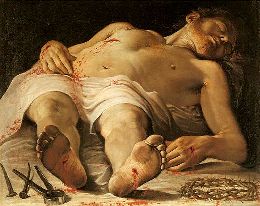 Comparing the stories
Comparing the stories
In columns, transcribe the gospel accounts of an event in Mary’s life, for example
- the women standing near the cross when Jesus died
- the appearance of the angels at the tomb
- the appearance of Jesus to Mary of Magdala.
Find and mark the phrases that are the same in each gospel. Then find and mark the phrases that are different. Remember that the evidence given by eye-witnesses is often inaccurate in details; you might test this yourself by having members of your group give separate descriptions of a recent event you all witnessed.
1. What information is contained in all accounts of the gospel event?
2. What information is left out of any one account?
3. What information is added?
Find out what the general purpose of each evangelist was. What audience was each writing for?
Is the evangelist’s purpose evident from the passages you have looked at?
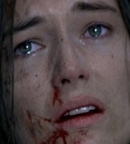 Interviewing an eye-witness
Interviewing an eye-witness
Imagine that you can interview an eyewitness who was present at some incident in the gospel. This eyewitness has direct experience of one or several events.
- Choose an incident you wish to examine.
- Read different accounts of the event in the four gospels.
- Prepare a list of questions you might ask the eyewitness for further information about the events and people.
‘The Da Vinci Code’ Controversy
Was Mary Magdalene married to Jesus? Click here for the answer…
Art Gallery
Click on the Art Gallery link for MARY MAGDALENE.
Read the story, or if you already know it well scroll down to the Painting section.
Scroll quickly through the pictures to gain an initial impression (click on the images to enlarge them). Which ones jump out at you?
Go back and look at them more carefully. Why did they gain your attention?
Analyze what features made them attractive to you. Was it a personal thing, or would these features make them attractive to any audience?
Now go over each of the pictures more carefully. What is the main message of each one? Is there any particular picture whose message is especially attractive to you? What does it say to you? Why is this important to you?
‘…Mary is dressed in flamboyant red, a color with all sort of connotations – Sexual passion and license, the allure of the sinful woman, a come-and-get-me color. There is in fact no reason at all to think that Mary was an ex-prostitute. She had been cured of a severe illness but only later, when celibate male scholars wrote about the story, was Mary’s illness linked to her sexuality.’
Art Gallery: Mary Magdalene
Martha and Mary of Bethany
(The story, with Bible text and notes, is at Martha & Mary’s story)
A Letter from the Past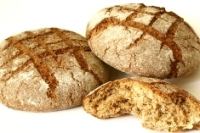
Choose one of the three characters in the Bethany household: Martha, Mary or Lazarus.
Write a letter to that person, asking for more details about what happened in one of the events in which Jesus played a part.
You might ask about the house they lived in, what they were doing, what their emotions or reactions were, what the other people in the story were like, etc.
Then compose the letter that Martha, Mary or Lazarus might have written in response to your questions. Give as much information as you can.
You must base this response on
- research you have done into the life and people of the times
- a creative reconstruction of possible emotions, reactions, ideas, etc.
Tracing the Last Steps of Jesus
Research the route that Jesus followed through the Jerusalem/Bethany/Kidron Valley area. See Maps of Jesus’ life.
Find the probable locations of events in the last days of Jesus’ life.
The Dinner at Bethany
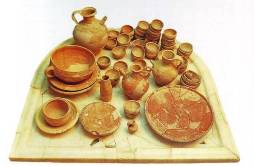
Meals were simple but wholesome. Bread was a feature of every meal. The Ancient Kitchen – what people ate
Find out about meals in ancient Israel,
- the meat, vegetables and desserts that were available ( a famous cook called Apicius wrote a cookbook at about the time these events occurred, using ordinary ingredients as well as expensive ones; use a search engine to locate this book and consult his recipes).
- the type of cooked dishes that were served
- the layout of a dining room
- the etiquette of dining.
Using this information, describe the meal that Jesus attended at the home of Martha, Mary and Lazarus.
Elizabeth
The story, with Bible text and notes, is at Elizabeth’s story
Investigative Reporting
Read 1 Luke:1-4. This seems to be a description of investigative journalism.
Now imagine you are Luke, a journalist. Prepare a set of questions you would like to ask each of the three main characters in the story: Elizabeth, Zechariah, or Mary.
Then imagine you are one of these three, and give the answers you think they would have given in an interview.
‘Elizabeth’s extended family decided that the baby would be called Zechariah, but Elizabeth stepped forward and briskly contradicted them. Her son’s name was to be ‘John’, she said. They argued, but Elizabeth stood her ground.’ Elizabeth’s Story
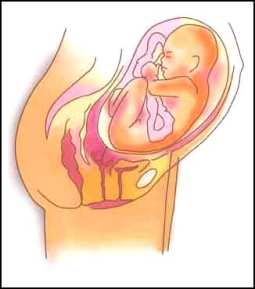 Comparing the Songs
Comparing the Songs
Read the Song of Hannah (2 Samuel 2:1-10) several times, so that its rhythm and imagery become familiar to you.
Now read the Song of Elizabeth and the Magnificat (Luke 1:42-55), noting the similarities and differences.
What significance for Christians can be read into the points of difference?
The Samaritan Woman
The story, with Bible text and notes, is at the Samaritan Woman’s story
Mapping activity
Using maps for events in Jesus’ life, locate the following:
- Samaria
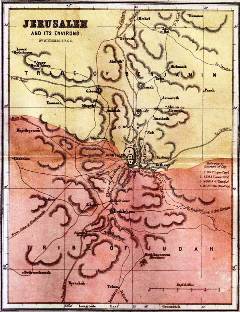
- Galilee
- Judea
- Phoenicia
- Decapolis (this was the area of the ‘ten cities’, founded by the Macedonians and Greeks; originally they were politically independent, but by the time of Jesus they were controlled by the Romans)
- the city of Sebaste/Samaria
- Mount Gerizim
- Jerusalem
- the Jordan River
 A Window to Another World
A Window to Another World
Pretend you are the Samaritan woman, and explain your life/point of view. To do this, you should
- make a thorough reading of the story
- make a list of the things you know for certain about the character
- make a list of the things you would like to know about the character
- research background details, for example, historical period, housing, clothing, family background, likely opinions and experiences
- have a learning partner quiz you on the character of the Samaritan woman
- undertake further research if necessary
- write an account of what happened, from the perspective of the Samaritan woman.
Television scriptwriting
Using the text as your source of information, write a television script for a scene between the Samaritan woman and the townspeople. In this scene
- she tells the townspeople about her conversation with Jesus
- she describes her reaction
- she responds to questions and objections about what has happened.
The crippled woman
(The story, with Bible text and notes, is at the Crippled Woman’s story)
Healing Today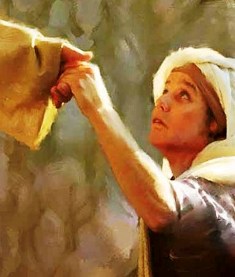
Find out about the various ways that healing is done in our community today. Make sure that you include examples of emotional and mental healing as well as physical healing.
In groups, discuss
- experiences you have had of healing
- the advantages and disadvantages of different types of healing.
Coping with Illness
Recall a time in your life when you were ill or unhappy.
- What effect did your illness have on your emotions?
- On your work?
- On your relationships with other people?
- What helped you to recover?
- What could your friends or family have done to help you recover?
 Did the illness/unhappiness result in any changes in the way you lived your life? Would you have suggestions for someone going through the same experience?
Did the illness/unhappiness result in any changes in the way you lived your life? Would you have suggestions for someone going through the same experience?
Exploring the Gospels
Explore the gospels to find other stories of healing by Jesus.
- What illnesses do these stories describe?
- How would they be treated today?
- Are the illnesses or people in the story symbolic of larger issues? If so, what are they?
The menstruating woman
(The story, with Bible text and notes, is at the Menstruating Woman’s story)
Empathic reconstruction
The daughter of Jairus was physically dead. The woman with prolonged menstruation had suffered for twelve years from her illness and from being ritually unclean. She had been unable to live a normal life, and therefore in a sense had been dead to herself and the people around her. Jesus returned both of them to life. Menstruating Woman
Imagine that you are present at the event described, one of the people in the crowd. Describe
- Jesus and the jostling crowd around him
- Jesus’ reaction when he is touched by the woman, and her response.
What are your own emotions when you realize she may have touched you too, and that as a devout Jew you will have to go through the process of ritual cleansing?
What are your thoughts a few days later, when you have had time to think about the whole incident?
Present these responses in the form of a journal entry, or assume the persona of the man/woman, and tell the group or a learning partner about your experience.
 Research
Research
Find out about the medical practices and beliefs that were prevalent in 1st century Palestine. These would have been similar to those found in Rome, Greece and Egypt at the time.
What were seen as the causes of disease and illness?
What were some of the treatments prescribed by doctors?
The woman taken in adultery
(The story, with Bible text and notes, is at the story of the Adulterous Woman)
Interviewing an eye-witness
Imagine that you can interview one of the people present at this event.
- What are the questions you need to ask to discover the background of the people involved?
- What are the questions you would ask to find out what happened?
- What are the questions you would like to ask, but hesitate to do so?
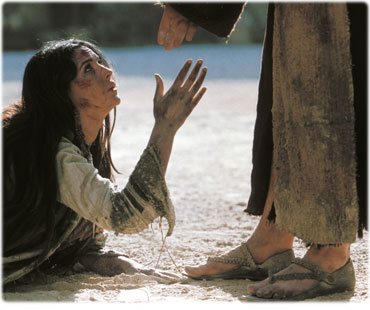 Discussion: ‘What If…?’
Discussion: ‘What If…?’
What if Jesus had chosen quite a different course of action? What if, knowing the danger he faced, he did not go to the Temple that morning? What if he stayed in Bethany with his friends on that particular day, so that the story of the adulterous woman never happened.
Would this have affected the ideas behind Christianity?
In other words, how big a role does this story play in the way that Christians think and act? Discuss.
Our Effect on Others – meditation
What effect did this event have on each of the people involved:
- on the scribes and Pharisees,
- on the woman,
- on the person who saw and recorded the event,
- and even on Jesus himself?
Can we ever know what effect we have on others?
*** If you have trouble finding information for the activities, try the Google search boxes on this page.
A resource for Study Groups and Schools: Women in the Old and New Testaments
Famous Paintings of
Find out more
Young People in the Bible
Mary’s dilemma at the Annunciation
Bible Buildings: Houses
In cities like Jerusalem or villages like Nazareth
Bible Heroines: Ruth
Loyal to Naomi and to God
Meditation for Parents
Looking for a meditation
to help you through the day?

